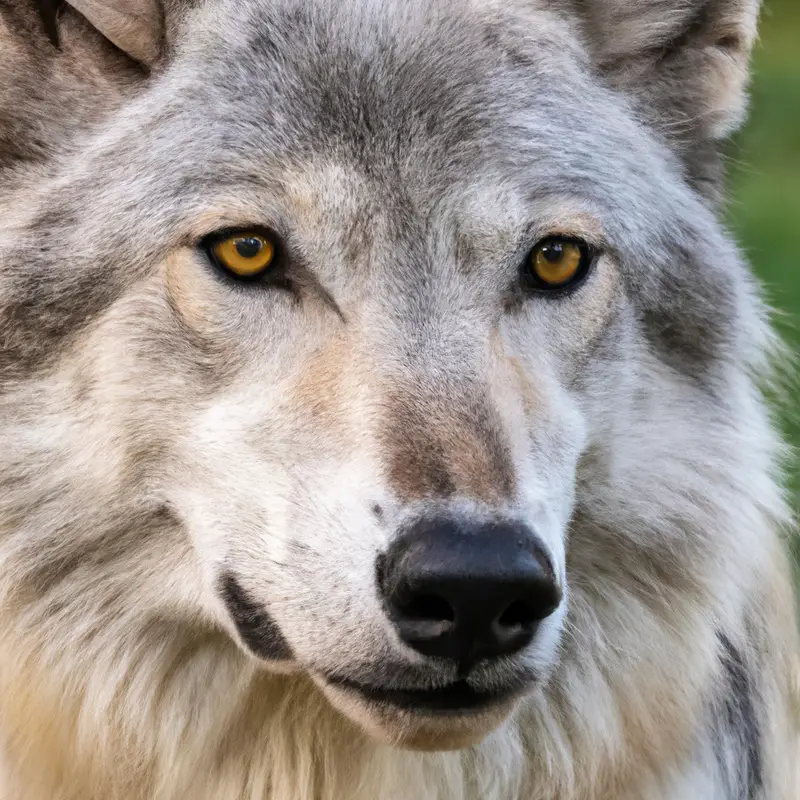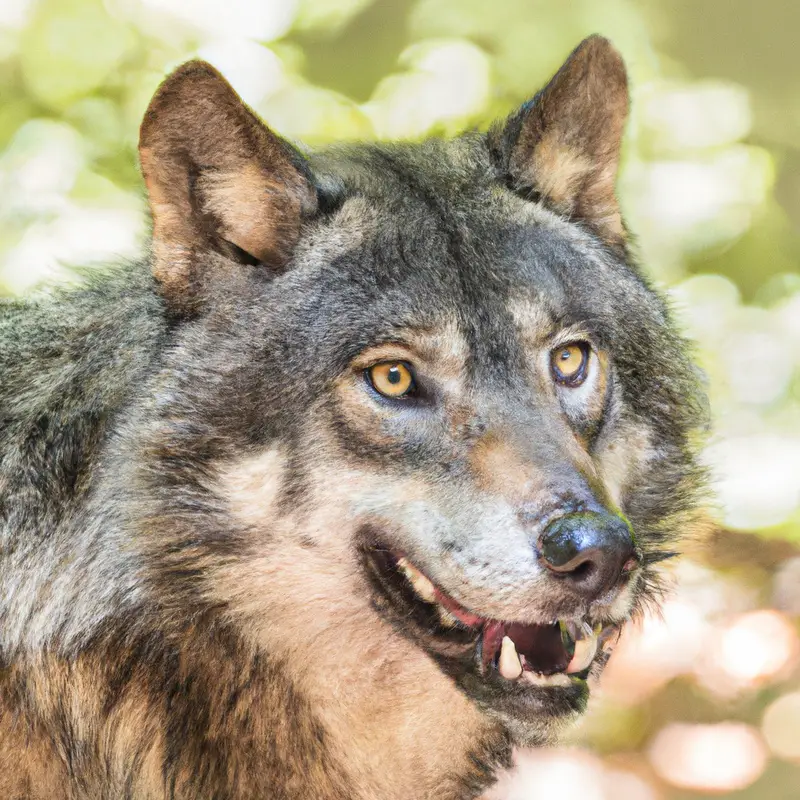Key Takeaways:
- Alaska has a significant population of wolves, making it a popular destination for hunting enthusiasts.
- Hunting wolves in Alaska requires a permit and adhering to strict regulations set by the state.
- Successful wolf hunting requires knowledge of their behavior and habitats to increase chances of a successful hunt.
- Hunting wolves in Alaska contributes to the state’s wildlife management efforts.
Imagine stepping into the wild and rugged terrain of Alaska, where the primal allure of wolf hunting awaits. In this vast wilderness, the chase becomes a dance between man and beast, with every heartbeat echoing the instinctual connection between predator and prey.
As an expert hunter with years of experience in Alaska, I have witnessed the beauty and challenges that come with hunting these elusive creatures.
Join me as I guide you through the intricacies of wolf hunting, from understanding the regulations and permits, to mastering the necessary equipment and techniques. Get ready to embark on an adventure like no other, as we explore the untamed world of wolf hunting in Alaska.
Aspect | Pros | Cons |
|---|---|---|
Experience | Thrilling adrenaline rush | Potential danger |
Challenge | Develops tracking and survival skills | Physically demanding |
Control | Helps maintain balanced ecosystem | Controversial among conservationists |
Meat | Provides sustenance | Controversial among animal rights activists |
Trophy | Prestige and recognition | May promote unethical hunting practices |
Regulations | Maintains sustainable hunting practices | Strict rules and limited permits |
Overview of Wolf Hunting in Alaska
Hunting Regulations and Permits
Hunting regulations and permits for hunting wolves in Alaska are important to ensure the sustainability and conservation of the species. Before you go hunting, you’ll need to obtain the appropriate permits from the Alaska Department of Fish and Game.
These permits help regulate the number of wolves harvested each season, preventing overhunting.
Additionally, there are specific regulations regarding hunting seasons, bag limits, and methods of take for wolves. It’s crucial that hunters familiarize themselves with these regulations to ensure they are hunting within the legal requirements.

Hunting Seasons and Bag Limits
Hunting Seasons and Bag Limits in Alaska vary depending on the region and type of game.
For wolves, the hunting season generally runs from August to March.
As for bag limits, it typically ranges from one to five wolves per hunter per season, depending on the specific regulations for each region.
It’s important to always check the latest hunting regulations and guidelines from the Alaska Department of Fish and Game to ensure you’re compliant and up to date with any changes.
Remember to take into account sustainable practices and the conservation of wildlife while engaging in hunting activities.

Required Hunting Equipment and Gear
To hunt wolves in Alaska, you will need the right equipment and gear.
Here are the essentials:
- Rifles or shotguns with adequate caliber or gauge for the task.
- Ammunition appropriate for the firearm.
- Optics like scopes or binoculars to aid in spotting and targeting.
- Good-quality camouflage clothing to blend in with the surroundings.
- Sturdy and comfortable hiking boots for rugged terrains.
- Backpack to carry essential items, such as food, water, and hunting gear.
- Game calls to attract wolves and increase your chances of a successful hunt.
- Blaze orange vest or hat for safety during hunting season.
- Field dressing kit for processing the kill.
- GPS or maps to navigate the wilderness.
Remember to check local regulations for any additional gear requirements and always prioritize safety during your hunt.
Choosing the Right Hunting Techniques
Tracking and Locating Wolf Packs
Tracking and locating wolf packs requires a combination of skills and knowledge.
Firstly, studying their behavior and habitat is key.
Wolves often follow established paths and can be found near water sources and prey-rich areas.
Secondly, learning to identify tracks, scat, and other signs of their presence is crucial.
Thirdly, using techniques such as howling, calling, or using electronic devices can help attract and locate them.
Remember to be patient, observant, and respectful of their territory while you track and locate wolf packs.
Effective Calls and Decoys
Effective calls and decoys are essential tools in hunting because they attract and deceive animals, increasing your chances of a successful hunt.
With calls, you can mimic the sounds of prey or predators to lure in your target.
Decoys, on the other hand, create the illusion of a potential meal or a safe space for the animal.
When choosing calls, consider the specific species you’re hunting and practice using them to achieve realistic tones.
With decoys, opt for ones that closely resemble the animals you’re hunting to maximize their effectiveness.
Understanding Wolf Behavior for Successful Hunts
Understanding wolf behavior is essential for a successful hunt. Wolves are social animals that live in packs and work together to hunt their prey.
They exhibit cooperative hunting strategies, such as ambushing, chasing, and encircling, to bring down their target.
By studying their behavior, you can anticipate their movements, locate their den sites, and even mimic their vocalizations to attract them. Understanding how they communicate, their hunting patterns, and their territorial instincts will increase your chances of a successful wolf hunt.

Preparing for Wolf Hunting in Alaska
Physical Fitness and Conditioning
Physical fitness and conditioning are important for wolf hunting in Alaska.
To be successful, you need to be in good physical shape to trek through rough terrain and withstand harsh weather conditions.
Build endurance through cardio exercises like running or hiking.
Strengthen your muscles with weight training and bodyweight exercises.
Don’t forget to train for agility and balance, as these skills will be invaluable during the hunt.
Stay consistent with your workouts and gradually increase intensity to prepare your body for the demands of wolf hunting in Alaska.
Survival Skills and Safety Precautions
Surviving and staying safe during a wolf hunt in Alaska requires certain skills and precautions.
First, make sure you have a good understanding of wolf behavior, such as their territories and communication methods.
It’s important to be able to read their body language and respond accordingly.
Second, always carry appropriate gear, such as a reliable firearm, protective clothing, and navigation tools.
Third, stay vigilant and aware of your surroundings at all times.
Avoid surprising or cornering wolves, and maintain a safe distance.
Lastly, let someone know about your hunting plans and estimated return time.
Stay safe out there!
Packing Essential Supplies and Gear
When it’s time to pack for a wolf hunting trip in Alaska, there are a few essential supplies and gear that you shouldn’t forget.
Here’s a quick rundown:
- Quality hunting rifle: Choose a rifle that meets the necessary caliber requirements and is accurate for long-range shots.
- Ammunition: Carry enough rounds for the duration of your trip, including extras for practice sessions.
- Optics: Invest in a good pair of binoculars and a spotting scope to help you spot and track wolves from a distance.
- Clothing: Dress in layers to handle the changing temperatures. Don’t forget waterproof and insulated gear, as well as quality boots.
- Hunting knife: An essential tool for field dressing and processing game.
- Calls and scents: Bring wolf calls and attractants to attract and lure wolves closer for a better shot.
- Backpack: A durable backpack to carry your supplies, gear, and any harvested game.
- First aid kit: Accidents happen; be prepared with a well-stocked first aid kit.
- GPS and maps: Ensure you have reliable navigation tools to help you navigate the vast Alaskan wilderness.
- Food and water: Pack enough nutritious food and water to sustain yourself throughout the hunting trip.
Remember to check with local authorities and hunting regulations to ensure you have all the necessary licenses and permits.
Happy hunting!
Tips for a Successful Wolf Hunt
Selecting the Best Hunting Areas
When selecting the best hunting areas, there are a few key factors to consider. Firstly, look for areas that have a high density of prey animals such as deer or elk.
These animals are a food source for wolves, so finding areas where they congregate is a good indicator.
Secondly, pay attention to the terrain. Wolves prefer dense cover like thick forests or steep hills where they can ambush their prey.
Finally, consider the presence of water sources nearby, as wolves require fresh water for survival.
By taking these factors into account, you can increase your chances of finding a successful hunting area.
Camouflage and Scent Control
Camouflage and scent control are essential factors to consider for a successful wolf hunt. When it comes to camouflage, blending in with the surroundings is key.
Choose clothing and gear that matches the terrain and foliage, helping you stay hidden from the keen senses of wolves.
Additionally, scent control is crucial to avoid detection. Use scent-reducing sprays or cover scents to mask your human scent and minimize the chances of wolves catching your scent trail.
By incorporating effective camouflage and scent control strategies, you increase your chances of a successful wolf hunt.
Patience and Persistence in Tracking the Wolf
Tracking a wolf requires a great deal of patience and persistence.
It can be a challenging task, but with the right approach, it can also be rewarding.
Here are some tips to help you in your tracking journey:
- Be prepared to spend long hours in the field. Wolves are elusive creatures and often move silently and swiftly through their territory. It may take days or even weeks to catch a glimpse of one.
- Study the wolf’s behavior and habitat. Understanding their patterns and habits can give you a better idea of where to look and when. Pay attention to tracks, scat, and other signs of their presence.
- Stay focused and alert. Tracking requires keen observation skills and the ability to notice even the smallest details. Look for disturbed vegetation, droppings, or any other indicators that can lead you in the right direction.
- Use camouflage and scent control. Wolves have a keen sense of smell and can detect human presence from a distance. Wear clothing that blends in with the surroundings and use scent-blocking techniques to minimize your scent.
- Utilize technology. Binoculars, GPS devices, and trail cameras can greatly enhance your tracking efforts. They can help you cover larger areas, document evidence, and increase your chances of success.
Remember, tracking a wolf is a challenging pursuit that requires time, effort, and dedication.
Stay patient, remain persistent, and enjoy the journey.
Good luck!
Ethical Considerations in Wolf Hunting
Understanding the Importance of Conservation
Conservation is vital for protecting our planet’s delicate ecosystems and preserving biodiversity.
It ensures that we can continue to enjoy the beauty and benefits of our natural world for generations to come.
Conservation efforts help protect endangered species, preserve habitats, and maintain the delicate balance of our ecosystems.
By understanding the importance of conservation, we can play an active role in preserving our environment and ensuring a sustainable future.
From reducing waste and supporting renewable energy sources to participating in local conservation initiatives, every action we take can make a positive impact.
Applying Fair Chase Principles
Applying Fair Chase Principles is essential in hunting. It ensures that hunters are ethically and responsibly engaged in the pursuit of game.
One important principle is the notion of giving animals a fair chance to escape and evade capture.
This means not using unfair advantages, such as using illegal methods or techniques that guarantee success. Another principle is respecting the environment and its inhabitants.
This includes not causing unnecessary harm or destruction to habitats and other wildlife.
By adhering to these principles, hunters demonstrate their commitment to sustainable and ethical hunting practices.
Proper Disposal and Utilization of Wolf Harvest
Proper disposal and utilization of wolf harvest is essential to ensure ethical hunting practices.
When you harvest a wolf, it is important to respect the animal by utilizing as much of it as possible.
Consider these tips for proper disposal and utilization:
- Meat: Wolves can provide a good source of lean meat, especially if properly cared for and processed. Use the meat for personal consumption or donate it to local food banks or charity organizations.
- Fur and Hide: Wolves have beautiful fur that can be used for various purposes. It can be made into clothing, blankets, or rugs, or sold to furriers.
- Bones, Antlers, and Teeth: These can be used for decorative purposes or crafted into unique jewelry or other items.
- Education and Research: Consider donating the carcass or parts of it to educational institutions or research organizations. This allows scientists and students to study and learn from the animal.
Remember, the goal is to honor the animal and use its resources respectfully and responsibly.
By doing so, you contribute to sustainable hunting practices and promote the ethical treatment of wildlife.
Experiences and Stories from Wolf Hunters
Personal Experiences and Lessons Learned
Personal Experiences and Lessons Learned: Through my years of hunting wolves in Alaska, I’ve had some unforgettable experiences. One of the key lessons I’ve learned is the importance of patience.
Tracking and locating a wolf requires time and perseverance.
It’s crucial to stay focused and adapt to changing circumstances. Another lesson is the need for preparation.
Knowing the terrain, weather conditions, and having the right gear is essential for a successful hunt.
Lastly, respecting the natural environment and wildlife is paramount. It’s crucial to act responsibly and ethically when engaging in any hunting activity.
Unique Challenges and Thrills of Wolf Hunting
Unique Challenges and Thrills of Wolf Hunting Wolf hunting presents a unique set of challenges and thrills that sets it apart from other types of hunting. Firstly, tracking and finding wolves requires a deep understanding of their behavior and habitats.
It can take days or even weeks of patient tracking and scouting to locate a pack.
Additionally, wolves are intelligent and elusive creatures, making them difficult to outsmart. Hunting them requires patience, skill, and a good understanding of their social dynamics.
The adrenaline rush that comes from successfully tracking and taking down a wolf is unlike any other hunting experience.
It’s a thrilling culmination of skill, knowledge, and a deep connection to the natural world.
Inspiring Stories of Conservation and Respect for Wildlife
I’ve come across some truly inspiring stories about conservation and respect for wildlife that I want to share with you. One story that touched my heart is about a group of volunteers who dedicated their time to rehabilitating injured animals and releasing them back into the wild.
They worked tirelessly to provide medical care, nourishment, and a safe sanctuary for these animals, ensuring their well-being.
Another amazing story is about a community that came together to protect a vulnerable species. They created awareness campaigns, organized clean-up drives to preserve the animal’s natural habitat, and even implemented stricter regulations to prevent poaching.
Their efforts resulted in an increase in the population of this species and a more harmonious coexistence between humans and wildlife.
I also heard a heartwarming account of a wildlife photographer who spent months observing and documenting the behavior of a particular species. His photographs not only captured the beauty of these animals but also shed light on the importance of their conservation.
Through his work, he aimed to inspire others to appreciate and protect the wildlife that shares our planet.
These stories remind us of the power we have to make a positive impact on the natural world. Whether it’s through direct action, community involvement, or raising awareness, we all have a role to play in conservation and showing respect for wildlife.
together, we can ensure that future generations will continue to marvel at the wonders of the animal kingdom.
Final Verdict
Hunting wolves in Alaska is a thrilling and challenging endeavor that requires knowledge, skill, and respect for the natural world.
Understanding the hunting regulations, seasons, and equipment is essential for a successful and ethical hunt.
Choosing the right techniques, preparing physically and mentally, and being patient and persistent are key factors in tracking and locating wolf packs.
Additionally, it is crucial to consider the ethical considerations of conservation and fair chase principles.
By sharing experiences and stories, we can inspire a greater appreciation for the wolf and promote responsible hunting practices.
Happy hunting!









